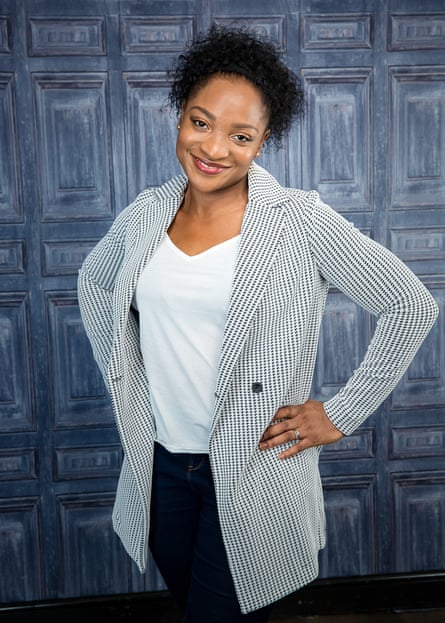Filmmaker Ed Accura was 53 when he learned to swim, and only then through fear that his young daughter might get into trouble and he wouldn’t be able to save her.
“I live near the Thames and I said to myself, if anything happened to her and I couldn’t help, I would never forgive myself.”
Until then he suffered from what he calls Bl-aquaphobia, a word he coined to describe the inherent fear black people have of water – a fear that’s “very, very different” from their white counterparts, he says.
“With white people, it’s usually to do with something that’s happened – ‘I fell into the water, there was an accident’, something like that. But there are a lot of black people, myself included, that have aquaphobia and don’t even know it.”
According to Swim England, the sport’s governing body, 95% of black adults and 80% of black children in England do not swim, and only 2% of regular swimmers are black.

It’s an alarming statistic that has life-threatening implications, Accura says, with black children three times more likely to drown than white children.
So two years ago, when his daughter Lolita was seven, he finally took the plunge, documenting his journey from a lifetime avoiding water to lowering himself gingerly into a chilly north London swimming pool.
He posted a short film on YouTube and such was the response from aquaphobic black, Asian and minority ethnic people that Accura felt compelled to make a feature-length follow-up.
Blacks Can’t Swim: The Sequel explores the sport’s prejudice, stereotyping and cultural exclusion – all through the eyes of young people.
Part documentary, part drama, it airs in May and follows two teenagers from a south London council estate, Layla and K-Frost, who sign up to a community programme to help young disadvantaged adults get better jobs. But to complete it, they have to learn to swim.
Along the way, we meet their friends – some real, some fictionalised – who talk about their experiences of swimming, and why, for the most part, they hate it and make excuses not to do it.

“People think, ‘Oh no, my period’s come, I don’t want to go swimming’, but then it’s like, if it’s not your period, it’s your hair, if it’s not your hair it’s your gut, if it’s not your gut it’s your stretch marks, if it’s not your stretch marks, it’s something else – there’s always a but,” says 22-year-old Melley Gebre-Hennes. Sayso, a musician, who wrote the soundtrack to the film, is one of the few young people in the community who admits to liking swimming but that’s only because he grew up in Nigeria where, he says, it was a common activity.
When he moved to Peckham in London, aged 15, he was the only boy in his football team who swam to keep fit. “I was thinking, ‘Why don’t you guys swim?’ They’d be like, ‘I don’t want to, it’s too cold, it’s my hair, it’s this, it’s that.’ I’m thinking, that’s crazy!”
It took all the fun out it for him and he stopped doing it, he says. “I was the only black kid at the pool, it was weird.”
The cultural barriers to swimming – from Afro hair to dry skin, to worrying about the myth that black people have heavier bones – are born of institutional and systemic inequalities that you see right across the aquatic industry, says Danielle Obe, founding member of the Black Swimming Association, a charity which launched last year to tackle the lack of diversity in swimming.
“Our community perceives swimming as a white man’s sport. Why? Because that’s what they see!” Obe says, arguing that it’s the same messaging you see whether it’s the Swimming Teachers’ Association or The Royal National Lifeboat Institution.
She points to swim caps as a case in point – they were designed by Speedo 50 years ago for Caucasian hair, “but they don’t work for us because our hair grows up and defies gravity”.
To encourage her own children to swim, Obe designed a waterproof wraparound scarf – and has been touting it around manufacturers in the hope that one might develop it.
They showed no interest. “The perception is they don’t swim anyway, so why should we bother?”, Obe says.
Now, Obe hopes that Accura’s film – available on digital download from 10 May on Apple TV, Sky Store, YouTube, Rakuten and Amazon – will help bring about change.
“We have to do something for our community,” she says. “It can no longer be that swimming is not part of our culture.”
